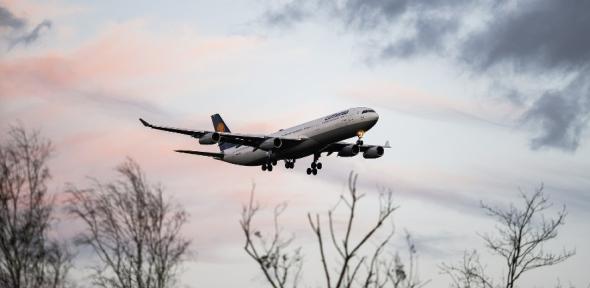
Along with all areas of the global economy, flight must become climate neutral. However, huge uncertainty remains around what technology, policy, finance, and behaviour will be needed to get it there.
Inspired by a call in early 2020 from His Majesty, King Charles III, for industry, academia, and Government to move much faster to get aviation to net zero, the University of Cambridge set up the Aviation Impact Accelerator (AIA). The AIA aims to accelerate the journey to sustainable aviation by developing evidence-based tools that allow people to map, understand, and embark on the pathways towards sustainable flight.
The team are now working on the Journey Impact Simulator, a tool that can be used to explore how a flight from A to B might look now and in the future, showing the best possible technology options to minimise climate impact while showing the user the trade-offs in terms of cost, land and electricity required. This tool draws results from the whole system model built by the AIA’s international and multi-disciplinary team.
“What we are trying to do is work with experts from industry, government, academia and civil society from around the world to identify 'unlocks' which will open the door to much wider transformation in the sector,” explains Professor Rob Miller, AIA lead and Director of the Whittle Laboratory, University of Cambridge.
Dr Samuel Gabra, an Egyptian research associate with the AIA, is passionate about scaling up energy access while reaching net-zero. Explaining how one might use the Simulator to explore a flight from London Standard to Sharm El Sheikh in 2035, he says that the model suggests a synthetic jet fuel and hydrogen combustion aircraft as the best options for limiting the climate impact.
“Although we reduce emissions by depending on hydrogen and synthetic jet fuel, this comes with a significant cost,” Gabra says.
It is startling to see the cost, land and electricity required for these future options. For example, for just one flight from London to Egypt in 2035 using synthetic jet fuel, the electricity requirement is approximately 166% of Egypt’s average electricity use per capita per year.
Gabra adds: “As we saw, the future of sustainable aviation is likely to require a huge amount of energy, which means it is impossible for a single country or region to single-handedly provide this amount of energy. This presents an opportunity for all countries, especially developing ones, to participate in the future of sustainable aviation. By capitalising on their abundant renewable resources, countries can act as hubs for producing green electricity and synthetic jet fuel.”
It is vital that as the world faces climate change adaptation and mitigation, all countries are included in the discussion around the opportunities and challenges. Aviation plays a key role in connecting our world, but access to the economic and social opportunities it brings are not equally available. As the aviation industry works to transform the sector, it is not just the climate impact that must be considered but the impact on people.
Adapted from an article from the Aviation Impact Accelerator
In the week of COP27 people across the world have flown to Sharm El Sheikh to discuss action on climate change. Aviation is a crucial way to bring us together to tackle this challenge – but it is also a major contributor to the problem.

The text in this work is licensed under a Creative Commons Attribution 4.0 International License. Images, including our videos, are Copyright ©University of Cambridge and licensors/contributors as identified. All rights reserved. We make our image and video content available in a number of ways – as here, on our main website under its Terms and conditions, and on a range of channels including social media that permit your use and sharing of our content under their respective Terms.